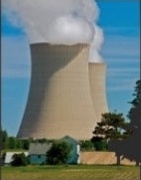By Kate Brown and Susan Solomon
[…]
Military strategists routinely target electrical grids and power plants to incapacitate the enemy. But Russia’s is the first invasion of a country that derives more than half its energy from nuclear power. It stands to reason that Russian generals will seek to capture all 15 active reactors in Ukraine. The Russian army appears to be using the nuclear installations as safe havens, calculating that the Ukrainians will not fire on them, but we can still expect plenty more fearful nights spent riveted to scenes of battles over huge concrete towers and rows of basins filled with radioactive spent nuclear fuel: It turns out that reactor containment buildings have never been stress-tested for blows from heavy artillery or missiles.
[…]
Even without a direct hit on a reactor, we are learning of the fragility of nuclear power plants. Normal oversight and operations have essentially been replaced by isolation and disorder. Workers at Chernobyl have been on the job continuously for more than three weeks. They have no clean clothes (important for nuclear workers), no real beds, no contact with family, no proper meals or rest. At the Zaporizhzhia plant, according to a Ukrainian official, Russian soldiers have forced employees into submission. Employee-hostages — exhausted, hungry and stressed — could make mistakes. So could the untrained Russian military personnel who are giving the orders.
Communication to these sites is largely cut off. Independent oversight experts cannot enter to verify safe operations or deliver spare parts. Russian diplomats continue to enjoy a privileged role at the International Atomic Energy Agency, despite the war. We have to rely on what the IAEA and the Russian army tell us. In the past, Soviet nuclear information services specialized in secrecy and mistruths. One of us, while working on a history of Chernobyl, found that the IAEA had difficulty acknowledging the public health impact of the fallout from the 1986 explosion there. Russian information services again appear to be opaque and untrustworthy. If an accident occurs, we don’t have confidence that rescue squads and firefighters can get to captured nuclear installations to deal with infernos and injuries. Nor can we be sure that we will learn the full extent of the damage and spread of radioactive sources.
[…] Ukraine has abundant solar and wind resources that it could harness, but little has been implemented so far. (The combined solar and wind potential in Ukraine would be about 150 percent of what its nuclear power production is now.)
[…]
As power was cut to the Chernobyl plant this month, nuclear engineers explained the importance of the electricity grid — even for plants that have been out of operation for decades. Chernobyl’s molten radioactive lava self-heats inside the belly of the blown reactor. Without ventilation, which requires electricity, hot air forms condensation that rains down inside the building, corroding and damaging equipment. With no electricity, the operators, who are working at gunpoint, have no idea of radiation levels inside the shelter. All anyone knows is that monitoring devices across the Chernobyl zone showed a spike in radioactivity a few days after the invasion. Then the monitors were hacked and went radio silent.
Chernobyl’s spent fuel is another danger. Left to its own devices, it can heat up to 1,000 degrees Celsius. At high temperatures, the zirconium sleeves covering the fuel can ignite. After the Chernobyl accident in 1986, Soviet liquidators hastily built huge basins to store highly radioactive spent fuel rods. Water pumped into the basins cools the fuel and blocks radioactive gamma rays that emanate from the irradiated uranium. Now 20,000 fuel rods are stored in Chernobyl basins designed for 17,000. Officials at the IAEA stated March 9 that there is little risk the fuel will catch fire, since the rods are no longer very hot. Yet a U.S. Nuclear Regulatory Commission study from 2000 found that “the possibility of a zirconium fire cannot be dismissed even many years after a final reactor shutdown.”
When one of us asked a former plant worker, Aleksandr Kupny, from the nearby city of Slavutych, also without power, about the IAEA’s statement that the spent fuel is safe without electricity, he said: “That’s fine for them to say, sitting in Vienna. For those of us here next to the plant, we are not so secure. In Kyshtym [Russia] in 1957, a nuclear waste storage site blew up, and that was just radioactive waste, not fuel.”
[…]
Read more.




